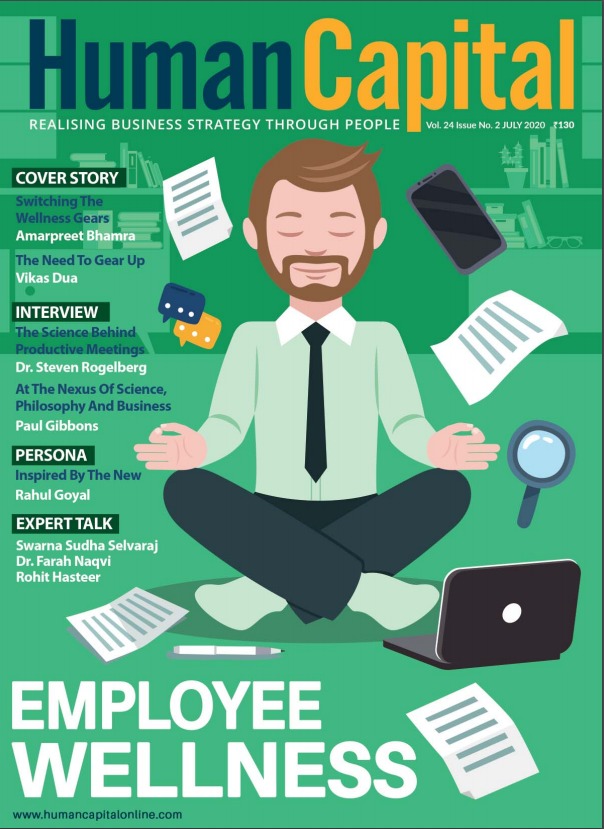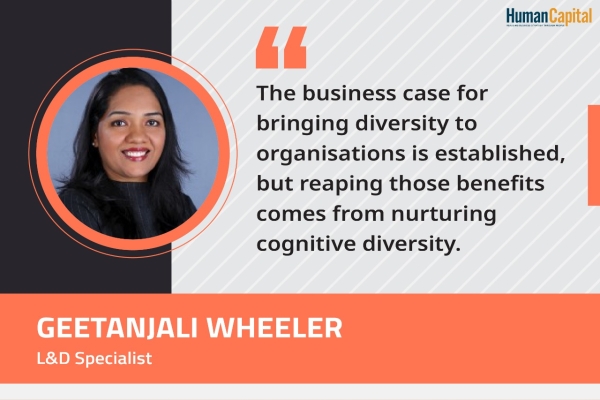In the context of a startup, it all begins beautifully with a strong alignment with a purpose. As the organisation matures, departments and functions emerge, and before you know it, siloed working starts to show up.
Sunday, 5 pm; Café Di Bella, Mahim, Mumbai
A mint chocolate milkshake and whipped cream with strawberries sat on the table while she looked into his eyes and asked him, “What has been your biggest high in the last two decades that you have spent in your current organisation?” His eyebrows went up, and he waved his palm at her, seemingly shaking her out of her amnesia. “High? What high? I’ve seen the lowest of lows! You seem to have forgotten!” he replied.
“Forgotten what? The fact that you have been like a lily in a dirty pond. The fact that everyone loves being a pig just so that they all look similar, or are you referring to the promotion announcements where more people are unhappy than those who are meant to be happy?” If these lines weren’t enough, she quickly popped in a few strawberries and continued —”Would you care for some more, or do you want to enjoy your milkshake?” Even before he could respond, she went on: “What holds you back? You are talented, mature, forward-looking, and thanks to the last few months, the silver strands on your head have also significantly increased. From the way I look at it, you seem to have what it takes to fit the stereotypical overgrown aspiring millennial wanting to have his own startup. Being in the space of HR, we need more intellectual capital than venture capital at this stage. And while you are most of the times right, I think my left brain will surely complement the space in which we want to make a difference.”
Out came the iPad, a new email was opened, and a resignation mail got typed. After a brief pause and a deep breath, the click of the send button sealed the envelope of a role that was extremely rewarding and gratifying but had outlived its life. It was time to give birth to a new life, and an idea was born.
Along with the idea came some fears and apprehensions. He looked at his phone, and an image popped up showing a long list of startups and their losses in FY 2020. He wondered if his leap of faith would let him fly or make him fall. However, her words were always magical and kept him on his path. He was confident that she could be his ventilator if ever he struggled to breathe.
The new, big whiteboard on his wall became the canvas upon which he painted the colours of his startup. He knew that choosing solid shades and accurately blending them was necessary. The foundation was laid with a very strong “why.” Next, he progressed to the “how” and then the “what.” He set up meetings with his investor contacts and figured out that it was essential to have clarity about the investor’s role. While advice can be sought and views can be heard, he realised it was not wise to let anyone, even the investor, dictate the terms of an idea! The industry segment he wanted to operate in remained his choice, of course! He needed to make a compelling presentation in the investors meeting. An intelligent scoop regarding the target audience and a robust scope of the business would make a great presentation, he thought.
His minds raced a few steps further; he was already visualising the future. It was important to research the competition that existed and understand their next moves. This meant a great deal of work that needed to start now. Who were the competitors, and where did they operate from? What is their USP? How have they positioned themselves? What can he do to be a differentiator from the crowd? More importantly, what does his startup stand for? He wanted his startup to stand out and not be the run-of-the-mill craze that many people latch onto just because everyone else is doing it. As he went about finding these answers, he kept killing Plan B in his head, ensuring that every thought gravitated back to Plan A. The time had come in his life when it was either this or nothing.
He leaned back on his bean bag and placed his legs on the coffee table. “Well, the startup does need people. Would it, however, make sense to have a human resource function? Does the startup really need an HR Leader?” Faces of friends from his network flashed through his mind. He scanned through each profile, wearing a CEO’s lens now. What he saw made his jaw drop! The success of a startup is measured by how its people drive the business, not by putting people into prisons of policies and procedures. “How about looking for a co-founder who has a perfect combination of business sense and people sense?” He could add common sense to complete the leadership. He realised that the best could be brought out of people only if they are allowed to work with freedom. Policies should be made for people and not the other way around by fitting people into rigid policies!
In the context of a startup, it all begins beautifully with a strong alignment with a purpose. As the organisation matures, departments and functions emerge, and before you know it, siloed working starts to show up. It is important to build and maintain a culture of alignment with the organisation’s purpose and not have a bunch of departments competing with each other. Leadership must be carefully chosen so that it is demonstrated by example rather than by titles or designations. He was convinced that this was the best way to develop a culture that manifests itself with the right kind of behaviour. There should be no room for wrong behaviour, right from the start, and anything that does creep in must be dealt with sternly to ensure that it acts as a strong deterrent for others as well. Across the board, non-negotiable behaviours and their consequences should be well known to all.
He looked around the room and noticed a bunch of bills lying on the bed. “Yes, of course! How could I forget this?” he thought. “Costs! My cost management strategy would also need to be explained to the investors. While they won’t be managing the company, they are certainly entitled to see how well their capital is being spent.”
“Phew! That was a lot to do! I think it’s time for another coffee and an exchange of ideas.” He texted her to meet him at Café Di Bella at 5 pm again. This time, the suspense during the meeting was on who was going to pay the bill. Oh really, when did money become a barrier between friends—or, should we say, cofounders?

Sahil Nayar, Senior Associate Director – HR at KPMG, is a HR professional whose forte is building an employer brand that helps attract and leverage relevant talent.

Harini Sreenivasan, Partner at Semcostyle Institute India, is adept at unlocking human potential in organisations.
Do you think hybrid work arrangements would be a common feature of the workplaces going forward?
Trending
-
SBI General Insurance Launches Digital Health Campaign
-
CredR Rolls Out 'Life Happens' Leave For Its Employees
-
Meesho Announces 30-Week Gender-Neutral Parental Leave Policy
-
Microsoft Unveils Tech Resilience Curriculum To Foster An Inclusive Future
-
60% Indian Professionals Looking For Job Change Due To COVID: Survey
-
SpringPeople And Siemens Collaborate For Digital Transformation Push
-
86% Professionals Believe Hybrid Work Is Essential For Work Life Balance: Report
-
Almost 1 In Every 3 People's Personal Life Affected Due To Work Stress
-
Meesho Rolls Out Reset And Recharge Policy For Employees
-
80% Of Talent Leaders & Academics Say Pandemic Changed Skill Needs For Youth: Report
-
Hero Electric Rolls Out 'Hero Care' Program For Employees
-
Human Capital In Collaboration With ASSOCHAM Hosts Virtual Conference
-
IKEA India, Tata STRIVE Collaborate To Create Employability And Entrepreneurship Opportunities
-
SAP India, Microsoft Launch Tech Skilling Program for Young Women
-
DXC Technology, NASSCOM Collaborate For Employability Skills Program
-
Lenskart To Hire Over 2000 Employees Across India By 2022
-
Mindtree Launches Learn-and-Earn Program
-
Tata AIA Extends 'Raksha Ka Teeka' To Its Employees
-
Swadesh Behera Is The New CPO Of Titan
-
NetConnect Global Plans To Recruit 5000 Tech Professionals In India
-
Hubhopper Plans To Hire 60% Of Indian Podcasters By 2022
-
Corporate India Needs More Women In Leadership Roles: Report
-
Aon to Invest $30 Million and Create 10,000 Apprenticeships by 2030
-
Tech Mahindra Launches ‘Gift a Career’ Initiative for Upskilling of Youth
-
40% Women Prefer Flexible Working Options in Post-COVID World: Survey
-
3 out of 4 companies believe they can effectively hire employees virtually: Report
-
Vodafone , CGI and NASSCOM Foundation launch digital skills platform
-
Odisha: Bank, postal employees to deliver cash for elderly, differently-abled persons
-
Skill India launches AI-based digital platform for "Skilled Workforce"
-
Hiring activity declines 6.73% in first quarter: Survey
-
70% startups impacted by COVID-19 pandemic
-
Bajaj Allianz Life ropes in Santanu Banerjee as CHRO
-
Over 70 Percent MSMEs look at cutting jobs to sustain businesses
-
93 Per Cent employees stressed about returning to office post-lockdown
-
Johnson & Johnson India announces family benefits for same gender partners
-
Indian firms turning friendly towards working mothers
-
Welspun India names Rajendra Mehta as new CHRO
-
Wipro partners with NASSCOM to launch Future Skills platform



Human Capital is niche media organisation for HR and Corporate. Our aim is to create an outstanding user experience for all our clients, readers, employers and employees through inspiring, industry-leading content pieces in the form of case studies, analysis, expert reports, authored articles and blogs. We cover topics such as talent acquisition, learning and development, diversity and inclusion, leadership, compensation, recruitment and many more.
Subscribe Now












































Comment